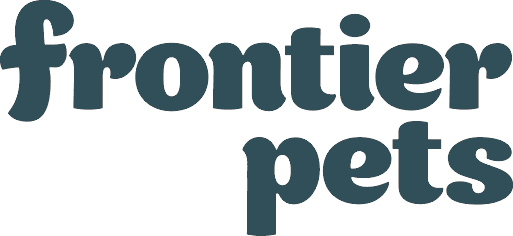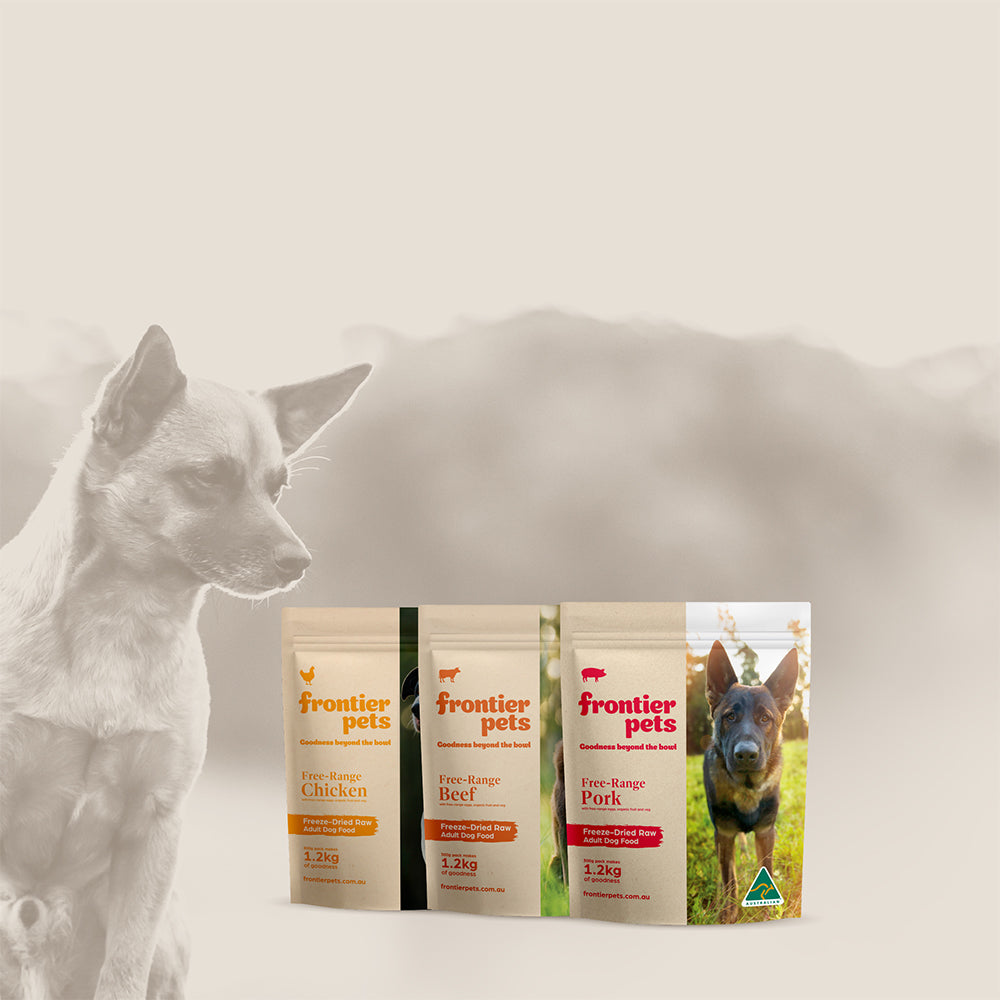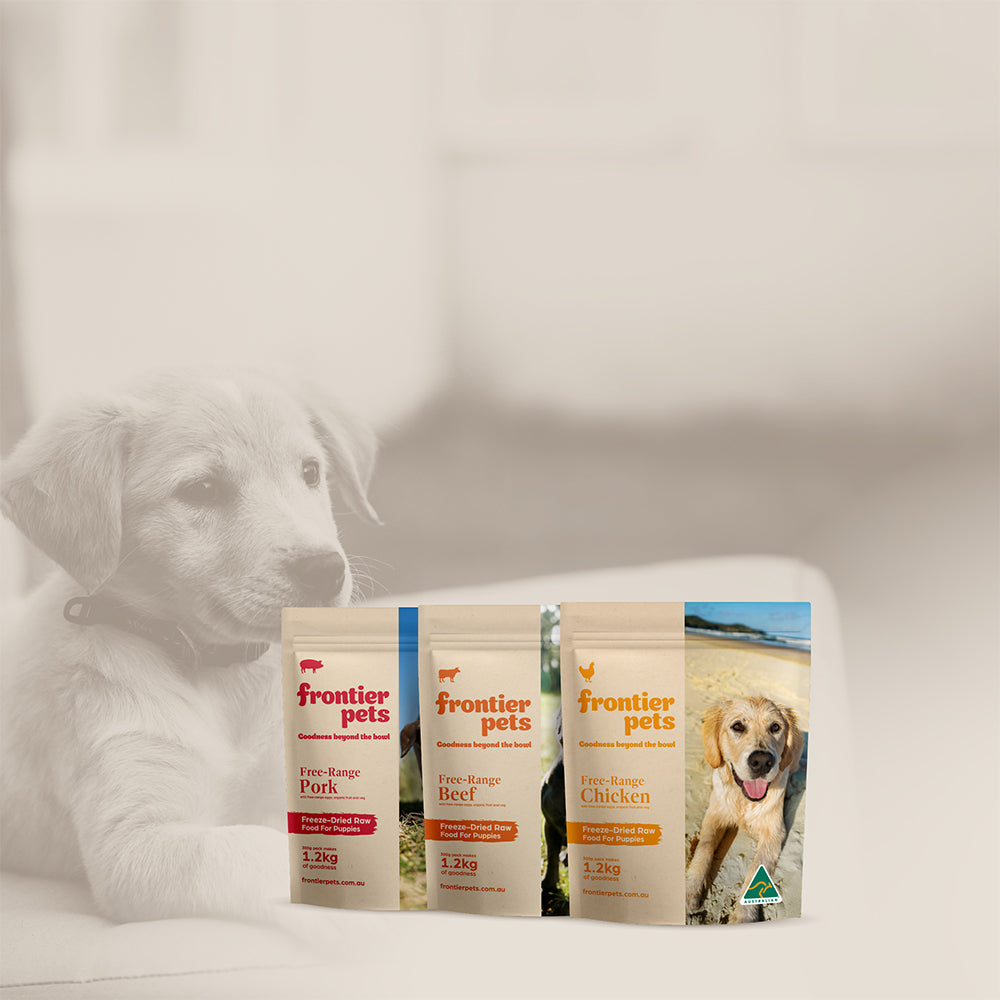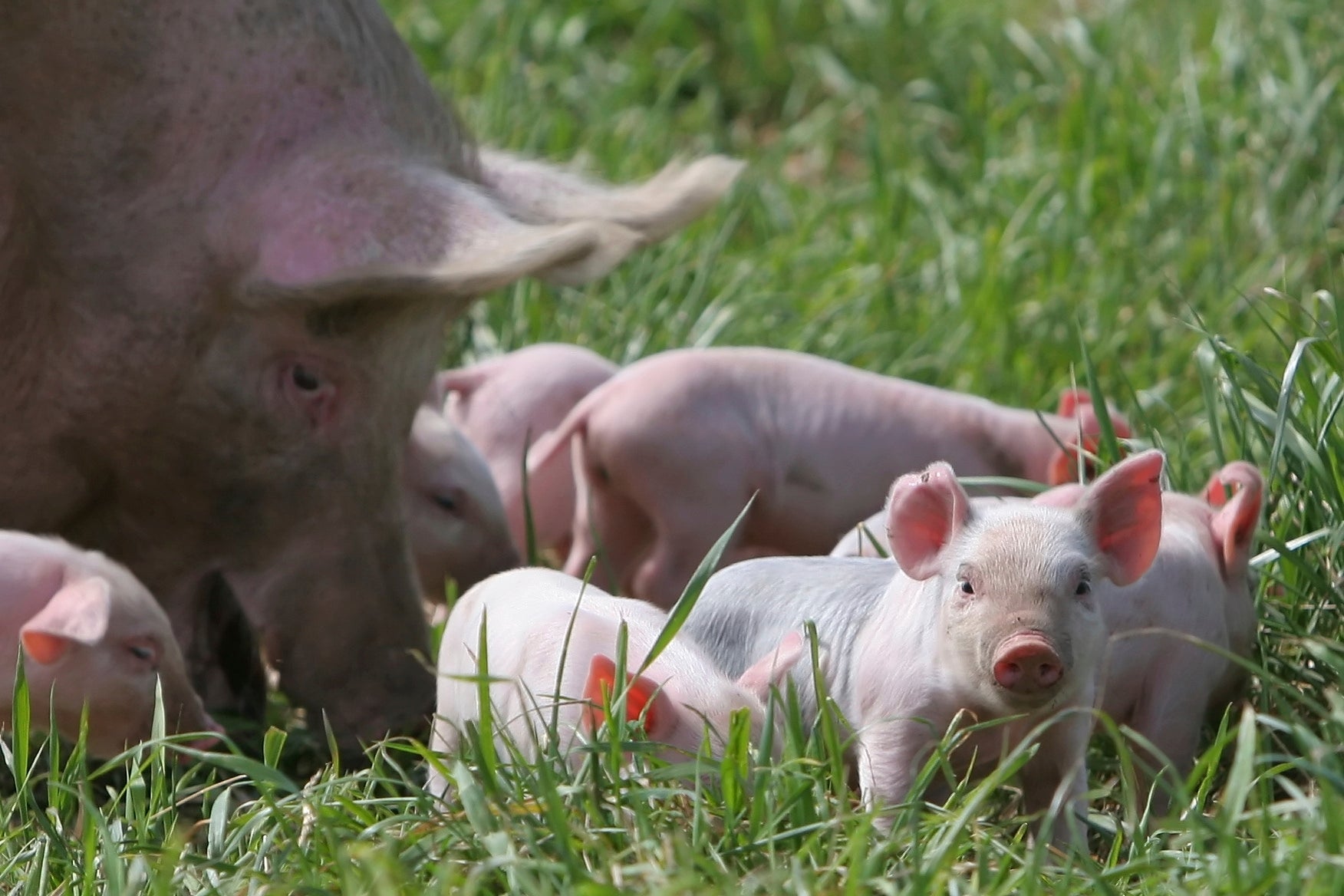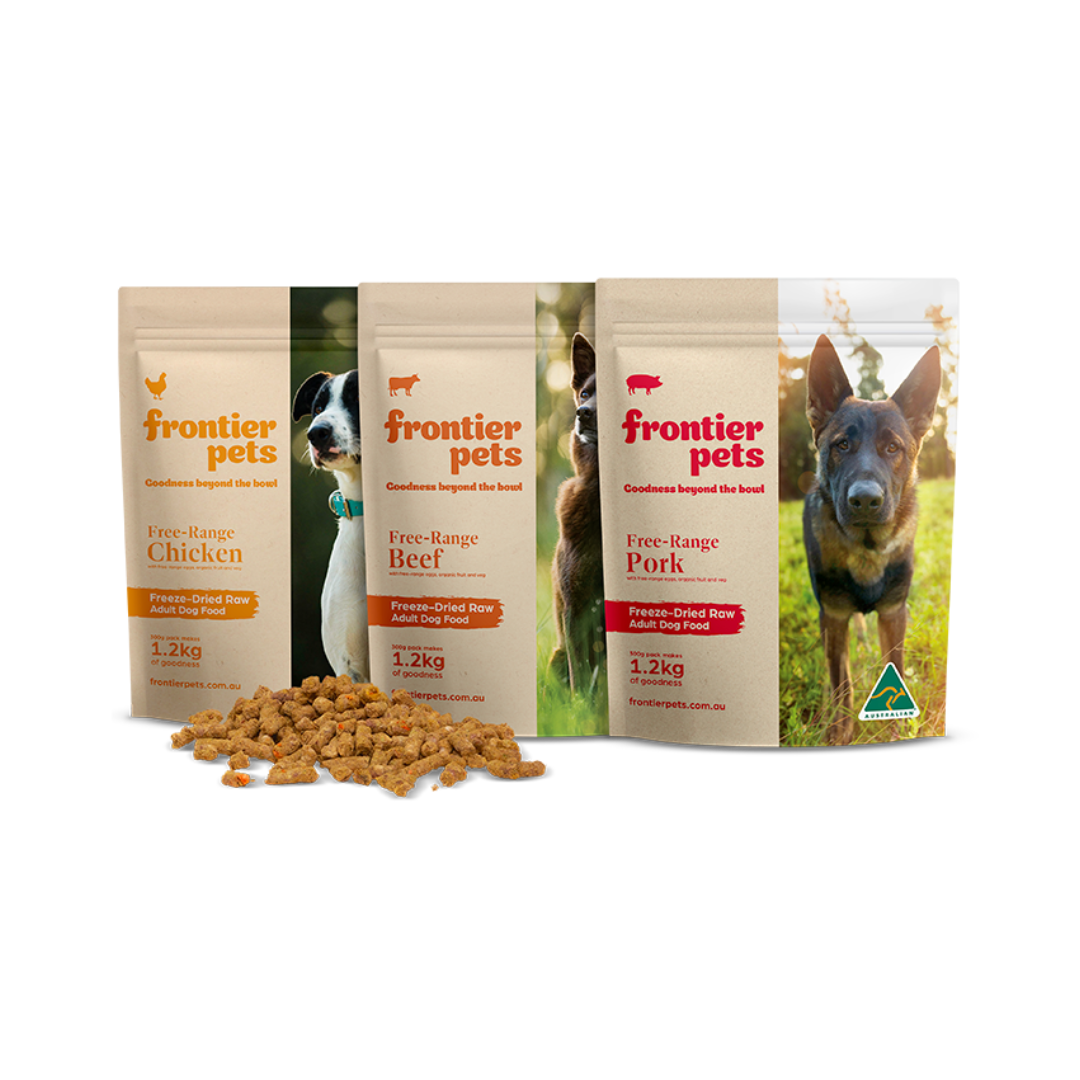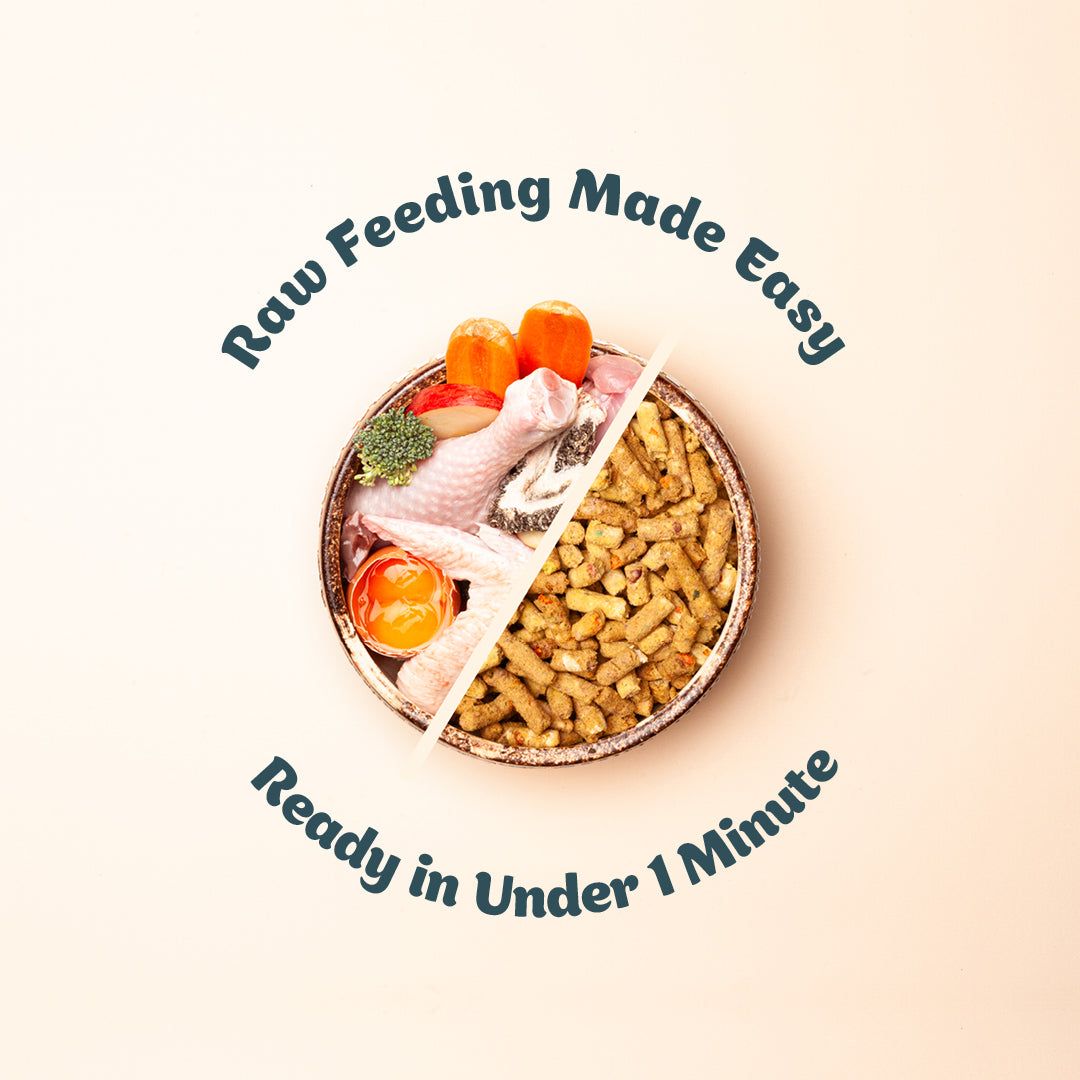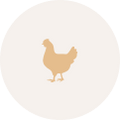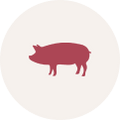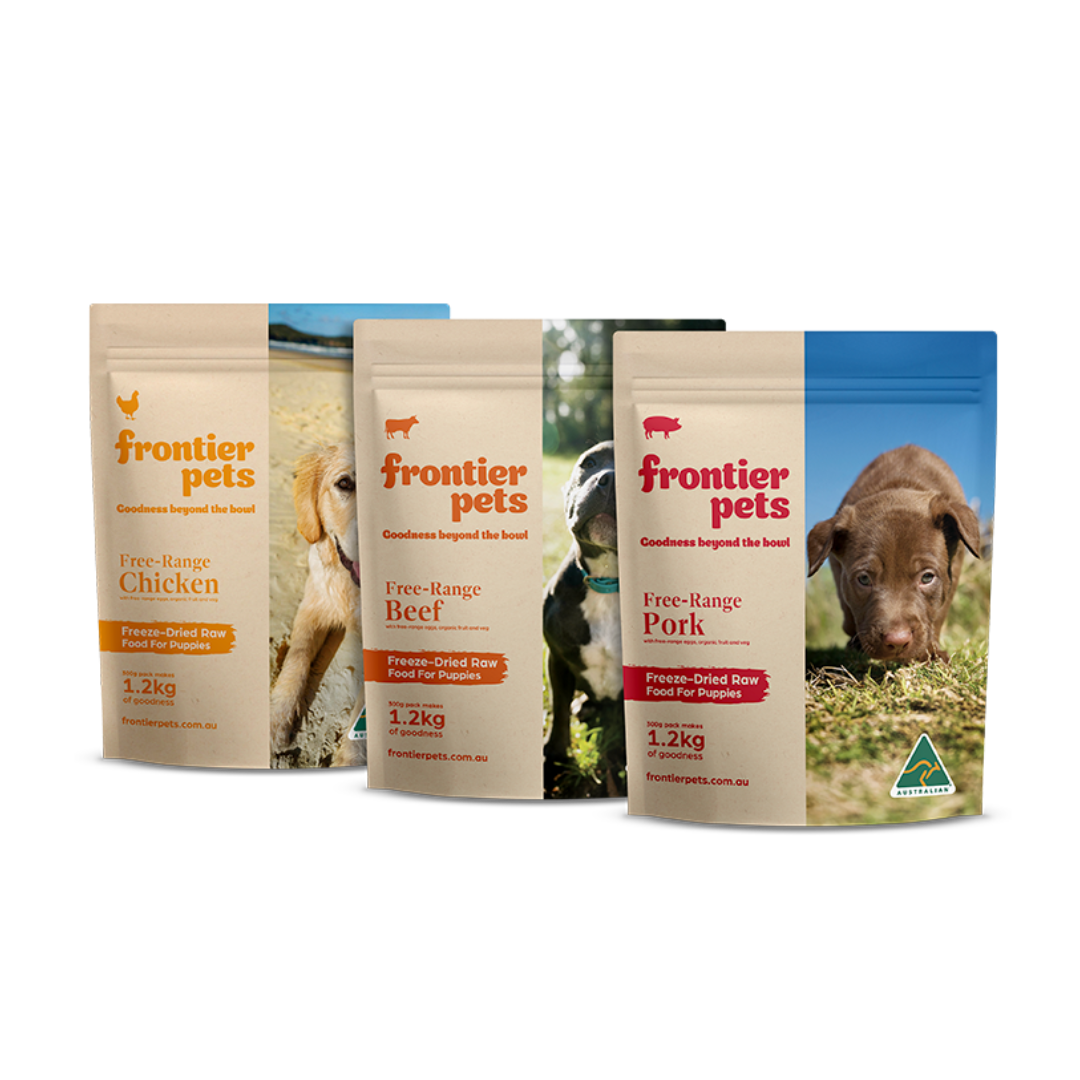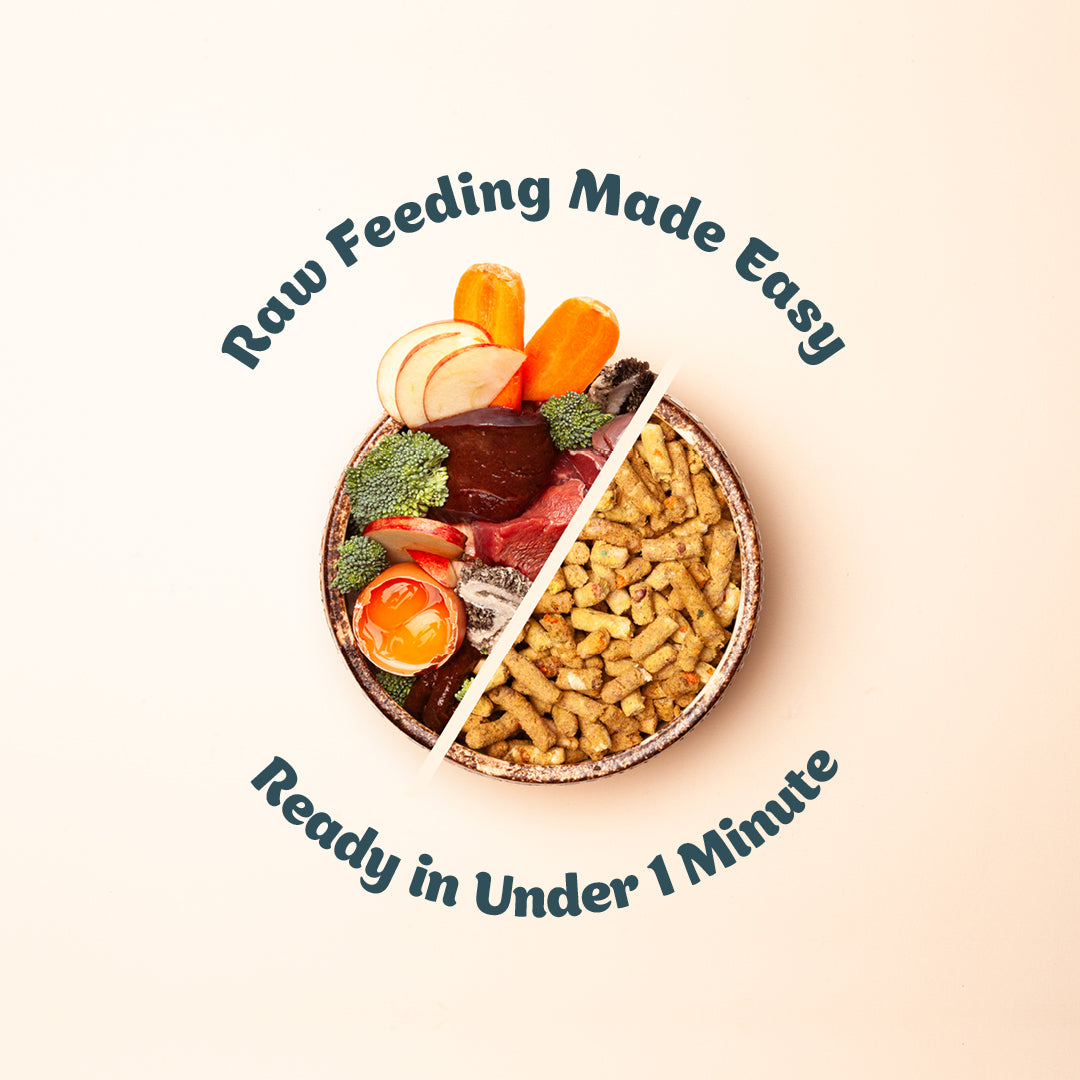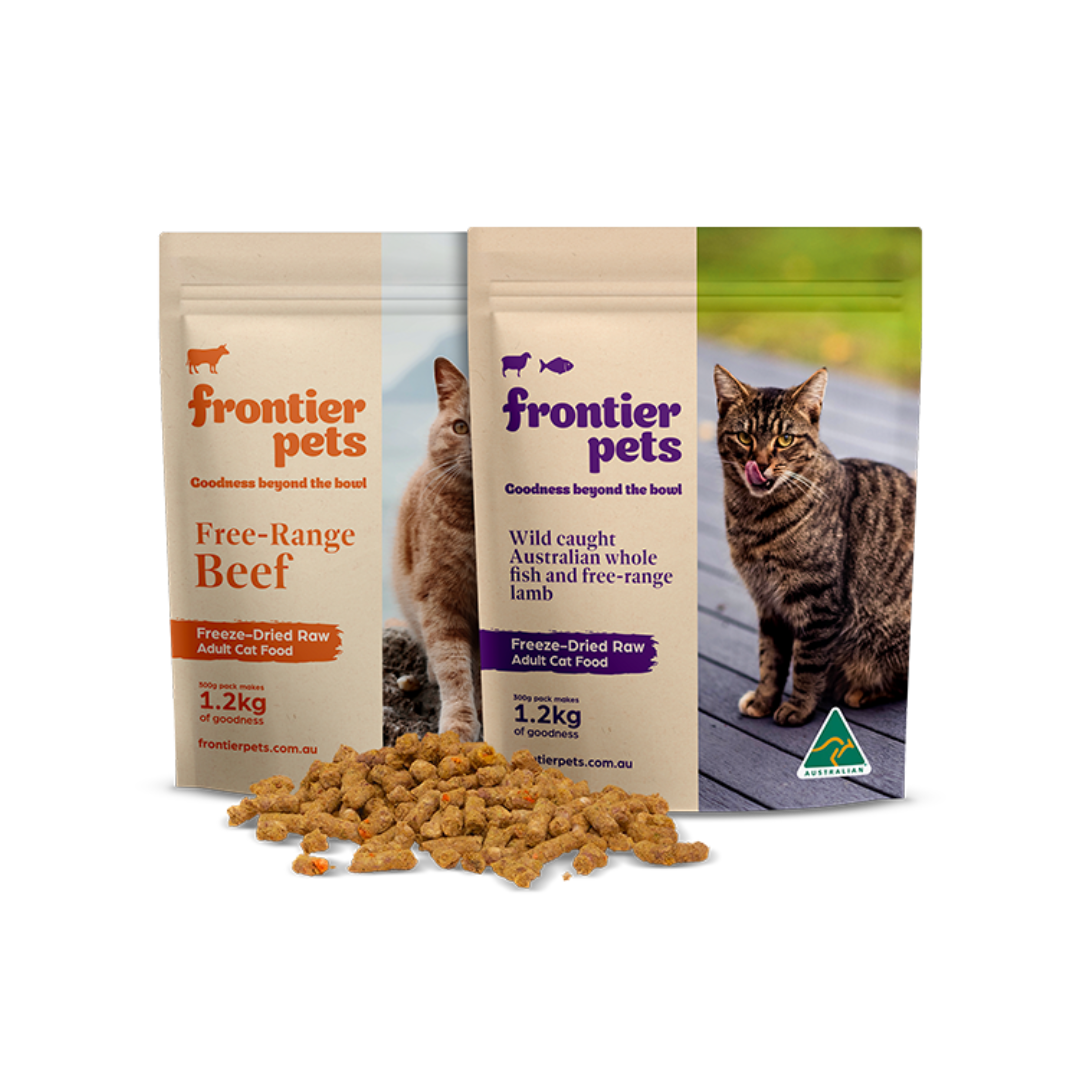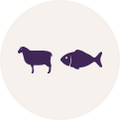
Your pet can change the world.
As humans, we are the world’s largest consumers of factory farmed animals. Our pets are the second largest. Our goal at Frontier Pets is to end factory farming and we believe that our pets can play a big role in achieving this.
Made from 100% free-range protein and organic produce sourced directly from Aussie farmers practicing sustainable agriculture, this pet food is better for your pet and better for the planet.
So not only are you feeding good, you're doing good.
Now that is GOODNESS BEYOND THE BOWL.
So far we've spent...
ON SUSTAINABLY FARMED PRODUCE
Why end factory farming?
Also known as Industrial Agriculture or Intensive Farming, Factory Farming is characterised by the use of close confinement systems, overcrowded sheds or barren outdoor feedlots. These animals are fed concentrated, inappropriate feed, and are prone to painful production-related diseases. More land is used to support Factory Farmed animals than Free-Range and for every 100 calories of edible crops to feed livestock, we get back just 30 calories in the form of meat and milk. It’s inefficient, it’s destructive, it’s unnecessary and it’s unbelievably cruel.
Animal welfare
If animals have what they need and are healthy, they are deemed to have good or high welfare. Animals in Factory Farms do not have what they need and are often unhealthy. They live in over-crowded conditions and denied many of their physical and behavioural needs. They’re kept permanently indoors where they’re caged, crammed or confined, living out their short lives in absolute misery. Pushed beyond their natural limitations, they are treated like production machines, rather than individual sentient beings. There are 500 million animals living in Factory Farms in Australia.
Humans can get sick from eating Factory Farmed animals
Intensification has had so severe an impact on meat quality that some scientists claim you’d have to eat four entire Factory-Farmed chickens to benefit from the same level of some nutrients you would have got from a single organic chicken in the 1970’s. They also contain nearly three times more fat and about a third less protein than 40 years ago, resulting in a worldwide epidemic of obesity-related diseases. Plus, over half of all antibiotics produced in the world are destined for food animals. These are used to boost growth or prevent disease – not to treat it. This creates the ideal conditions for bacteria to fine-tune their resistance and create powerful new bacteria that are being transmitted to people.
Other animals suffer and die
Seals eat salmon, so they naturally flock around Scottish fish farms where salmon are bred in Factory Farms (yes -fish are Factory Farmed). This is a problem for the fish farmers so the government has issued licenses for them to kill the seals – and this they do! Due to agricultural intensification, there are no longer enough bees to pollinate crops. As a result, farmers are forced to hire or rent them. At the same time every year 3,000 trucks drive across the US carrying 40 billion bees to California to pollinate almond trees. Think about the implications of that for just a moment.
Factory Farming is NOT feeding the world
Factory Farms are food factories in reverse. They waste it, not make it, and squander valuable cropland in the process.
Factory Farming uses vast amounts of land called “ghost acres”. An intensive chicken farm producing 150,000 chickens per annum will take up 892 square metres of ‘space’ but will need 90 hectares of arable land to produce the cereal (which they shouldn’t be eating in the first place) to feed those chickens. That land may be thousands of kilometres away from the farm, requiring substantial transportation, which in turn pollutes the environment. For every 100 calories of edible crops fed to livestock, we get back just 30 calories in the form of meat and milk, that’s a 70% loss. A third of the world’s cereal harvest is fed to industrial livestock. If it were used directly for human consumption it would feed about 3 billion people.
Factory Farming is destroying our planet
Every year an area of forest equivalent to half the UK is cleared, largely to grow animal feed and for cattle ranching. 200,000 hectares of Argentinean woodland is being lost each year to make way for soy (90% of which is used to feed Factory-Farmed animals). Globally, the livestock industry contributes 14.5 % of human-produced greenhouse gas emission – more than all our cars, planes and trains put together. Central Valley in America is home to 1.75 million dairy cows who generate more excrement than the entire population of the UK. This waste is channeled into vast lagoons attached to the farms where the poisons leach into the ground. One tonne of intensively produced US maize (a staple feed crop for intensive livestock) takes the equivalent of 1 barrel of oil to produce.
Fish are the most at risk
Fishmeal is one of the filthiest secrets of the Factory Farming industry – an environmental catastrophe that involves sucking million of tonnes of small fish out of the sea and crushing them into fish oil and dry feed for farmed fish, pigs and chickens.
The process deprives milions of larger wild fish, birds and marine mammals of their natural prey. Drastically depleting stocks of important species, it also pumps vile fatty waste into ocean bays, creating ‘dead zones’, polluting the atmosphere around processing plants, causing widespread human health problems and diverts what could be a highly valuable source of nutrition for people to industrially farmed animals.
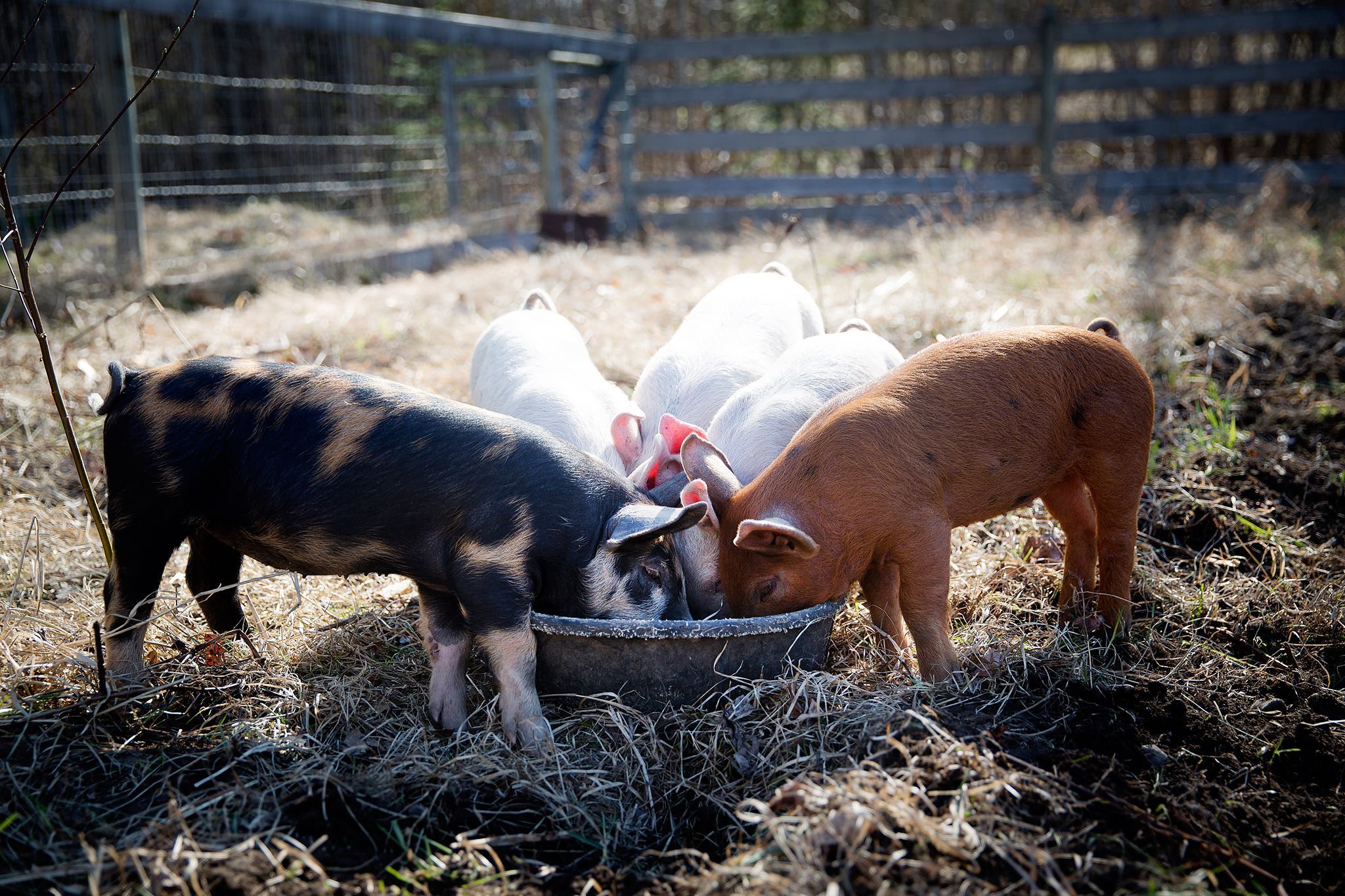
THE TRUE COST OF CHEAP MEAT
To produce 1 kilo of genuinely edible beef by industrial methods requires as much as 20 kilos of feed.
If you factor in externalities (such as the cost of converting grain to meat, water and energy use) the true cost of a $4 hamburger is something like $100. As production costs rise because of energy prices and pressure on other resources, the profit margin of Factory Farmed animals falls.
The only way to keep making money is to rear more animals. And so these farms expand and expand, multiplying the suffering, waste and environmental damage they cause.
Low-input and organic farming is more energy-efficient than conventional farming in nearly every case and organic farms have shown that it’s entirely possible to raise healthy animals with minimal use of antibiotics.
- Omega-3 levels in free-range and ethically farmed produce is substantially higher than in Factory Farmed animals. Pasture-raised beef is on average 2.7 times higher. Chicken is 20% to five times higher. Higher-welfare pigs are 40% higher and free-range eggs are 30% higher.
- Free-Range pig meat has, on average, 60% more vitamin E and free-range eggs have double the amount of vitamin E than cage eggs.
- The global population of meat chickens – 55 billion – could be kept free-range on an estate the size of Hawaii. Compare that with intensive farming, which requires a third of the world’s entire cropland.
- Organic milk production uses 38% less fuel energy than non-organic. Organic beef uses 35% less, organic lamb uses 20% less and organic pig meat uses 13% less.
- True sustainability means taking animals out of the sheds and restoring them back to the land in fields where they will swell the global food basket, instead of pilfering from it.
Statistics quoted on this page are sourced from Farmageddon by Philip Lymbery, CEO, Compassion in World Farming, with Isabel Oakeshott. Published by Bloomsbury Publishing Plc and reprinted with permission.
